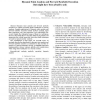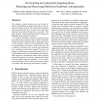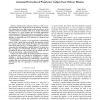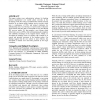SP
2010
IEEE
14 years 3 months ago
2010
IEEE
—Fuzz testing has proven successful in finding security vulnerabilities in large programs. However, traditional fuzz testing tools have a well-known common drawback: they are in...
SP
2010
IEEE
14 years 3 months ago
2010
IEEE
—Dynamic taint analysis and forward symbolic execution are quickly becoming staple techniques in security analyses. Example applications of dynamic taint analysis and forward sym...
SP
2010
IEEE
14 years 3 months ago
2010
IEEE
The computer systems security arms race between attackers and defenders has largely taken place in the domain of software systems, but as hardware complexity and design processes ...
SP
2010
IEEE
14 years 3 months ago
2010
IEEE
—EMV is the dominant protocol used for smart card payments worldwide, with over 730 million cards in circulation. Known to bank customers as “Chip and PIN”, it is used in Eur...
SP
2010
IEEE
14 years 3 months ago
2010
IEEE
Abstract—Unfortunately, malicious software is still an unsolved problem and a major threat on the Internet. An important component in the fight against malicious software is the...
SP
2010
IEEE
14 years 3 months ago
2010
IEEE
—Web browsers’ access control policies have evolved
SOUPS
2010
ACM
14 years 3 months ago
2010
ACM
Text-based passwords are still the most commonly used authentication mechanism in information systems. We took advantage of a unique opportunity presented by a significant change...
SOUPS
2010
ACM
14 years 3 months ago
2010
ACM
This paper explores user authentication schemes for banking systems implemented over mobile phone networks in the developing world. We analyze an authentication scheme currently d...
SOUPS
2010
ACM
14 years 3 months ago
2010
ACM
The principle of least privilege requires that users and their programs be granted the most restrictive set of privileges possible to perform required tasks in order to limit the ...
SOUPS
2010
ACM
14 years 3 months ago
2010
ACM
We examine the password policies of 75 different websites. Our goal is understand the enormous diversity of requirements: some will accept simple six-character passwords, while o...




